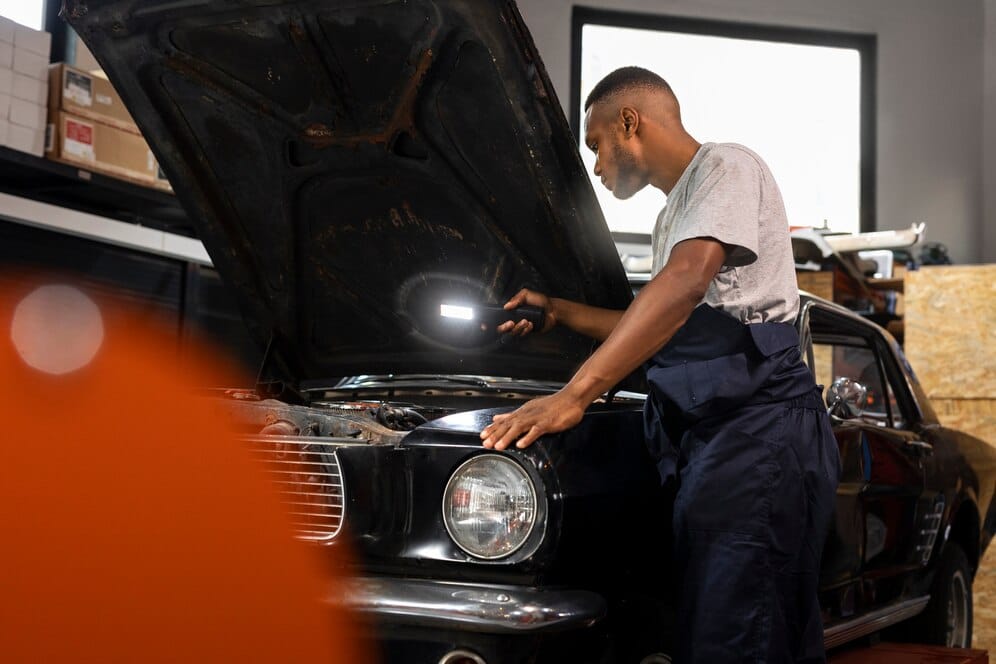Classic Car Restoration: A hobbyist’s guide
Classic car restoration is a beloved hobby that allows enthusiasts to revive vintage automobiles to their former glory, preserving automotive history and craftsmanship.


Classic car restoration is a beloved hobby that allows enthusiasts to revive vintage automobiles to their former glory, preserving automotive history and craftsmanship. Whether you're a seasoned collector or a novice enthusiast, embarking on a classic car restoration project can be a rewarding and fulfilling endeavor. In this guide, we'll explore the essential steps and considerations for restoring a classic car and share tips for success in this time-honored hobby.
1. Choose the Right Project Car
The first step in classic car restoration is selecting the right project car. Consider factors such as your budget, mechanical skills, and desired level of restoration. Research different makes and models to find one that resonates with your interests and preferences. Look for a solid foundation with minimal rust and structural damage, as addressing these issues can be costly and time-consuming.
2. Set Realistic Goals and Budget
Before diving into the restoration process, establish realistic goals and a budget for your project. Assess the condition of the car and prioritize repairs and upgrades based on safety, functionality, and aesthetics. Factor in the cost of parts, tools, and labor, and be prepared for unexpected expenses along the way. Setting clear goals and budget constraints will help you stay focused and avoid overspending.
3. Create a Detailed Restoration Plan
Develop a comprehensive restoration plan outlining the specific tasks and milestones for your project. Break down the restoration process into manageable stages, such as disassembly, bodywork, engine rebuild, interior restoration, and final assembly. Consider creating a timeline or schedule to track your progress and ensure that the project stays on track.
4. Gather the Necessary Tools and Resources
Invest in quality tools and equipment to facilitate the restoration process. Essential tools for classic car restoration include wrenches, sockets, screwdrivers, bodywork tools, paint supplies, and specialized equipment for engine rebuilding and upholstery. Consider joining online forums, attending car shows, and networking with other enthusiasts to access valuable resources, advice, and support throughout your project.
5. Perform Thorough Disassembly and Assessment
Begin the restoration process by carefully disassembling the car and documenting the condition of each component. Take photos, label parts, and keep detailed notes to aid in reassembly later on. Assess the extent of rust, corrosion, and damage, and prioritize repairs based on safety and structural integrity. Consult repair manuals, restoration guides, and online tutorials for guidance on specific procedures and techniques.
6. Address Structural and Mechanical Issues
Address structural and mechanical issues early in the restoration process to ensure a solid foundation for your project. Repair rusted or damaged body panels, straighten the frame or chassis, and rebuild the engine, transmission, brakes, and suspension as needed. Pay attention to critical components such as steering, braking, and electrical systems to ensure the car is safe and roadworthy.
7. Restore Aesthetics and Detailing
Once the structural and mechanical components are addressed, focus on restoring the aesthetics and detailing of the car. Repair or replace damaged trim, chrome, and glass, and refinish the bodywork with high-quality paint and clear coat. Restore or reupholster the interior upholstery, carpets, and trim to match the original specifications. Pay attention to authentic details and period-correct finishes to preserve the car's historical accuracy and value.
8. Reassemble and Test
After completing the individual restoration tasks, carefully reassemble the car, following your restoration plan and documentation. Test each system and component to ensure proper functionality and fitment. Conduct a thorough inspection and road test to identify any issues or adjustments that may be needed before finalizing the restoration.
9. Enjoy and Maintain Your Classic Car
Once your classic car restoration is complete, take pride in your accomplishment and enjoy the fruits of your labor. Take your restored car for leisurely drives, participate in car shows and events, and share your passion with fellow enthusiasts. Establish a regular maintenance routine to preserve the condition of your classic car and address any wear and tear that may occur over time.
Conclusion
Classic car restoration is a rewarding and immersive hobby that allows enthusiasts to breathe new life into vintage automobiles and preserve automotive heritage for future generations. By following the essential steps outlined in this guide and approaching the restoration process with patience, dedication, and attention to detail, you can successfully restore a classic car and experience the joy of driving a piece of automotive history. So, roll up your sleeves, grab your tools, and embark on an unforgettable journey of classic car restoration.